If you’re looking for a detailed REACH Cyber Charter School review from a totally unbiased source, I’ve got you covered. My son spent two years at REACH, the Connections Academy cyber school in Pennsylvania. Today, I’m going to tell you everything we loved about it, the few things that we didn’t love, and what to expect when your child attends REACH.
NOTE- I originally wrote this review about two years ago, after my son finished his first year at REACH. With so much up in the air right now about what the fall 2020 school year will look like, I thought now is a good time to refresh it a bit and get it back out in front of your eyes. Things get buried and I figured this is easier than sending you searching for it in my archives.
My son spent two years at REACH, for 7th and 8th grade. He decided to go back to a brick-and-mortar school for a “regular high school experience.” Poor kid, there’s nothing regular about his freshman experience, is there?
Right now, his school is doing online learning with another system, Edgenuity. Put in my nicest words possible, we’re not fans. After dealing with this learning system, I appreciate and miss REACH more than ever. The two systems are night and day. If your school is using Edgenuity, please don’t let it scare you away from cyber school entirely. As we’ll see below, REACH uses an entirely different learning system that is super user-friendly and takes different learning styles into account.
REACH CYBER CHARTER SCHOOL REVIEW
There are a lot of cyber schools out there these days, and it can be hard to decide which is the best! My goal is to provide you with everything I wanted to know while making my decision. If you have any questions once your done reading my review, please feel free to ask!
I’m breaking this up into sections that you can quickly and easily digest, starting with the “Reader’s Digest” mini review and quick glance pros and cons. Then I’ll get more detailed for those of you who prefer a more in-depth review.
THE TL, DR VERSION
Long story short, we really like REACH Cyber School. We’ve had far more good experiences over the last school year than negative. It’s been a lot better for my son’s mental health than public school, which is why we chose to go with cyber schooling in the first place.
Whether you’re more hands-on with your child’s schooling or prefer to leave most of the teaching to certified teachers, REACH slides right into your comfort zone. Every class has at least one teacher that specializes in the subject, and your kids can contact them at any time. These teachers (or their qualified assistants) also run the Live Lessons, which is the REACH equivalent to a classroom setting.
While you do need to be more involved with your kids’ education than you may be at a brick-and-mortar school, if you work full-time (or just don’t feel comfortable teaching) your kids aren’t just on their own for lessons. I think that was my biggest worry going into it: that Jake wouldn’t have any real support.
For those of us who are more hands-on, there are a lot of ways for you to be involved. I chose to learn Jake’s lessons ahead of time and teach him a few subjects myself. I was able to get him to actually focus in social studies (and finish with an A average), a subject he really doesn’t love, by creating my own more relatable mini-lessons to supplement the actual lesson.
Overall, we are happy enough with REACH Cyber that we’ve already completed the enrollment process for next year.
PROS & CONS of REACH Cyber Charter School
Pros in detail
- Free tuition & gift cards to offset internet cost– there is no fee for enrolling or attending REACH Cyber Charter School, and they will even send you a gift card every few months to offset the cost of the internet. I’m not sure if the offset varies just by state or by area, but I get $120 every three months during the school year.
- School provides just about everything- REACH will send you pretty much everything you really need, including a laptop computer and a printer. Do not let the overwhelming list of “things you need to provide” freak you out. That list contains every perishable item for every single experiment and project (many of which you don’t HAVE to do), as well as stuff you probably won’t even use. I just bought things as I needed, and probably spent less than $50 the entire school year. You will need to return the PC & printer when you leave REACH, and the text books at the end of each year.
- Very flexible scheduling- Depending on what grade your child is in, you can completely customize their entire schedule. I’m not sure if they allow this for the very early grades, but my son is in 7th grade and I had full control. As long as you distribute the classes so that they are completed by the end of the semester, you can customize to your heart’s content. Before you schedule, you can even add in family vacations, doctor’s appointments, and more so that classes aren’t scheduled on those days.
- Can do anywhere (website works on tablets & phones)- As long as you have a way to access the internet, your child can do their school work. Jake has done his classes on his school computer, his personal PC, my PC, and on my iPad.
- Highly-qualified teachers for each subject-As touched on above, every class has its own certified teacher. Some classes have more than one, depending on the size. Your and your student can call or email their teachers at any time during regular school hours. I’ve emailed teachers after school hours and they still responded that evening.
- Personalized support from family coordinator – When you join REACH, you’ll get a family coordinator that will help you through the entire process and during the year. If they don’t know an answer to a question, they’ll find it for you.
Cons in detail
- Very difficult to opt out of PSSAs- This is my only real complaint about REACH. Every year from 3rd to 6th grade, Jake opted out of the PSSAs (our state’s standardized test). In the past, I would sign a form saying I saw the test, view the test, then send in my letter. For REACH, you have to physically go to Harrisburg (3 hours away from me) to do the first part. They will also make you feel very guilty about trying to opt out before they even start to give you the instructions. Since traveling three hours away was a hardship for us, Jake took the tests. I don’t like that they make it a hardship to exercise your legal right to opt your child out of a mess of a test that shouldn’t exist in the first place.
- Reliable internet connection is a must- While this isn’t a problem for most of us, if you have a less-than-reliable ISP, you’ll run into some problems. We lost our internet along with our power for over a week when Riley hit. We did offline educational activities, then just got caught up when it came back. It wasn’t a major issue for us, but if you have a child prone to falling behind, it can become a huge challenge.
- No easy access to the B&M school*-Unless you live close to Harrisburg, you can’t really just pop by the school to get things done. While this wasn’t an issue for me 99.9% of the year, when it came to the state testing, it was a huge problem.
- Very few local field trips* – If you live near a larger city, this won’t be a problem. Unfortunately, we were unable to attend any of the field trips because they were quite a hike from us. I don’t drive on the highway (I’m terrified of it).
- Lack of social interaction – I have mixed feelings about including this on the con list because REACH does offer plenty of opportunities for your kids to connect with other students. From field trips (that, despite being too far for me, do exist) to meetups to a database with students interested in connecting (it’s voluntary), your kids do have a chance to interact. Also, I noticed that Jake actually spends MORE time with his two best friends from school, even though all three of them are now in different schools (one public, one private, and one cyber).
- Kids must be motivated & self-disciplined- Unless you want to stand over your child’s shoulder for 6 hours a day, you really need a kid who is motivated and self-disciplined enough to work well on his or her own.
The enrollment process
Enrolling was a lot easier than I thought it would be. Once you make the decision to enroll and fill out the required forms, REACH will give you a login to the Parent dashboard (they call it Learning Coach central). From there, you’ll see a handy checklist of everything you need to submit.
I was able to submit all my documents online, but if you can’t for whatever reason, I believe you can fax or mail them. The image above is a list of the documents I had to submit as a returning student. The first-timer list a bit longer, but you get the idea.
Setting up the Planner
Once your child is enrolled and they receive their course selections (for elementary and middle school they pick for you, high school may have more control over selections), it’s time to set up your child’s planner. Now, keep in mind that Jake is in middle school, so I don’t know if elementary or high school does things differently.
If you prefer, you can just go with the schedule they set, but Jake and I wanted more control. Basically, I could decide which classes took place on which days as long as I had enough of each class scheduled during the week to finish on time. I could make Friday an easy day, for example, by just having him do a Language Arts (you’ll need that pretty much every day) and then his “extras,” like Health, Education Technology, and Art.
Once you’re done, you can look at your child’s planner to see what they have coming up. I grabbed this screen shot from Jake’s first semester, and for some reason it doesn’t show all his classes, but again, you get the gist.
The different colors indicate different things. Green is a Live Lesson, the yellow indicates holidays, or the first or last days of school, and the pinkish color is for his regular classes. You can also see at a glance whether your child has any quizzes, tests, or portfolios (more on that in a minute) coming up.
You can rerun the scheduler at any time. When we lost power for 8 days, I rearranged things a bit so that he wasn’t stuck with a week’s worth of overdue lessons. Since we usually work ahead, then reschedule to bump classes up, it was easy to bump a few back.
What are the classes like on REACH?
I’m not going to screen shot an actual class because I don’t know if that’s allowed, so I “redacted” the actual slide and added my own notes.
Basically, each lesson consists of at least 4 slides (except for the tests, which usually just have one or two). Whether it has 4 slides or ten of them, you’ll usually see the same basic format across every lesson. This includes:
- Getting Started– brief overview of the class along with the objectives and keywords your student should learn by the end of the lesson.
- Instruction– on these slides, you’ll find notes about the subject, questions to think about (and a button for the answer), and links to things like videos, online textbooks, and more.
- Activity– these slides let your kids do some sort of interactive activity to help drive the lesson home. Sometimes it’s something they can do online, like a game. Other times, they’ll be directed to write in their journals.
- Review- just what it sounds like, a quick review of everything your child should have learned during this lesson
- Assessment- This is where your kids prove they actually learned something. We will talk more about those below.
One thing to keep in mind: your child isn’t required to do every last activity or view every single video in the slides prior to the assessment. REACH offers numerous different resources for each lesson because every child has a different learning style.
Jacob has come across classes where he already had a firm grasp on the objectives. I would have him just “flip” through the slides to make sure there wasn’t anything new to him, then go right to the assessment. While REACH says that each lesson should take about an hour, we’ve had some that we finished in five minutes. We’ve also had a few that took hours to do because of portfolios. It all evens out in the end.
Let’s talk more about those assessments, because they are actually a mandatory part of the lesson.
5 Main Types of REACH Assessments
Aside from any mandatory state testing, all assessments are done at home and assume that your kids are following the honor system.
1. Quick Check
The most common assessment, quick checks are short quizlets, usually between 3-5 questions, that focus on the key objectives. All of the quick checks combined usually make up between 5-10% of your child’s grades. Depending on the class, these may even be “open book.” They’re almost always multiple choice.
2. Quiz
Quizzes usually make up about 10-20% of your child’s grade for each class. They’re typically around 10 questions. Some may have 1-2 short answers, but for the most part they are multiple choice. The number of quizzes varies by class, but I’d say Jake’s average class had about 10 a semester.
3. Test
Tests are always “closed book,” unless otherwise denoted. Language Arts is the only class Jake had that included an open book section on the test. In classes that don’t use portfolios (below), tests make up the biggest chunk of your students grade, between 30-50%. There are about 4-5 per class per semester, and they include a mix of multiple choice and written answers.
4. Portfolio
Portfolios are like those major class projects that we used to do in school. They differ depending on the class, but most of them can be done on the computer. Most of Jake’s involved creating a Power Point presentation around a certain topic. Art class is a bit different. Your child will actually create their art work, then you either scan it or take a picture and upload it to the teacher.
These make up a huge chunk of your grade in most classes. In Art, they made up at least 50% of the grade.
5. Discussion
Not all classes use Discussions, and even in those that do they don’t make up a huge part of the grade. I think they were only worth about 5-10% in most of Jake’s classes. Still, they bear mentioning under assessments.
What type of support is available for parents?
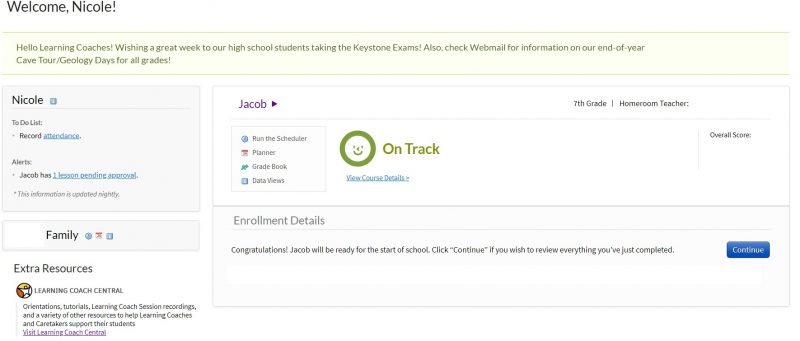
This is what I see when I log in. I blocked out some personal details, but you get the idea.
As a “Learning Coach,” you are primarily responsible for making sure your child puts in the time and completes their work. You’ll also need to monitor their progress. Don’t worry, though, REACH doesn’t just leave you on your own! Some of the resources available include:
Your family coordinator
Every REACH family has a coordinator that keeps in touch with them throughout the year. You’ll receive monthly check-in calls to make sure everything is going okay, or you can just call them up with any questions you have. If they don’t know it, they’ll tell you who does.
Message boards
REACH has message boards where Learning Coaches can interact with each other and get advice. They aren’t as active as I hoped they’d be, but if you do ask a question someone usually does respond within a few days.
Email system
REACH has its own email system that you can access when you log in. From there, you can get in touch with pretty much every teacher and administrator and ask them questions. You’ll also get a copy sent to your primary email address, so you don’t have to log in constantly to see if they responded.
Your children’s teachers
Your kids’ teachers are available to help you during regular school hours. Some of them even check in and respond on weekends, but don’t expect them to do so. They have lives and need time off, too!
Overall, Jake had such a positive experience at REACH. So much so that he’s going again for 8th grade. If you’re looking for a great cyberschool with a robust curriculum, I definitely recommend Connections Academy.

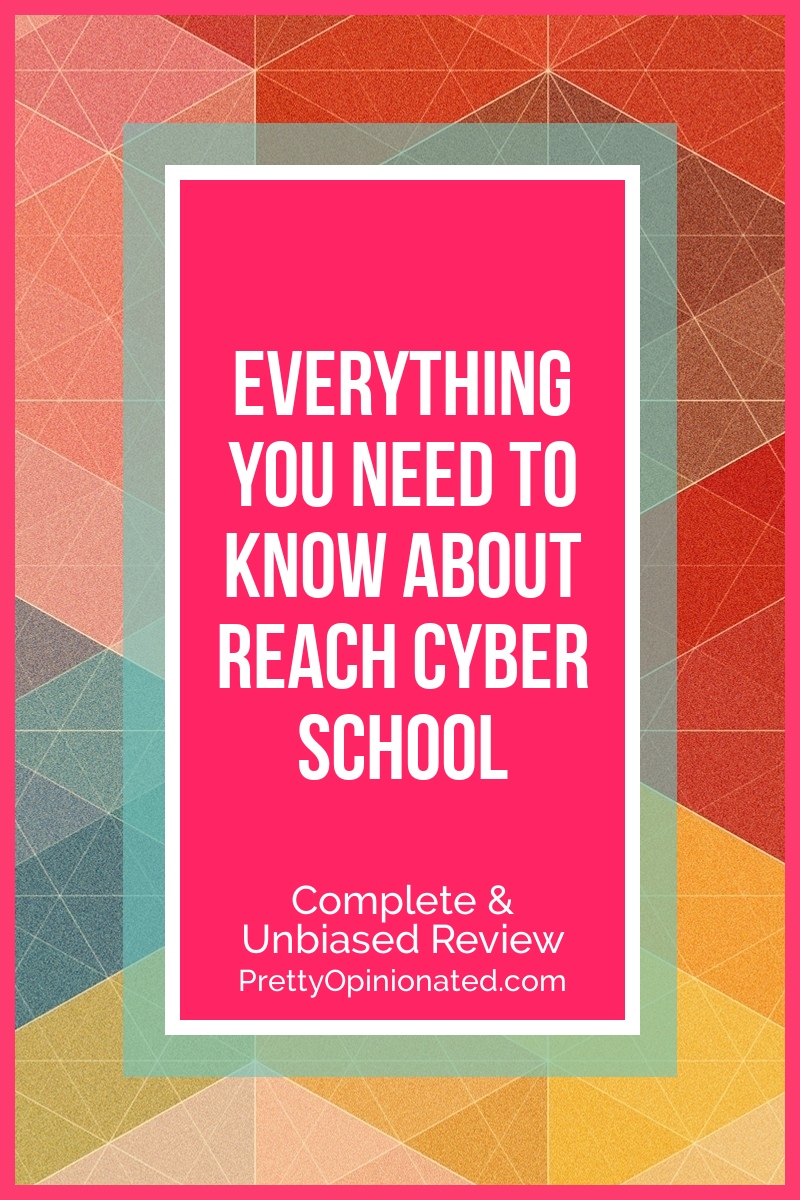
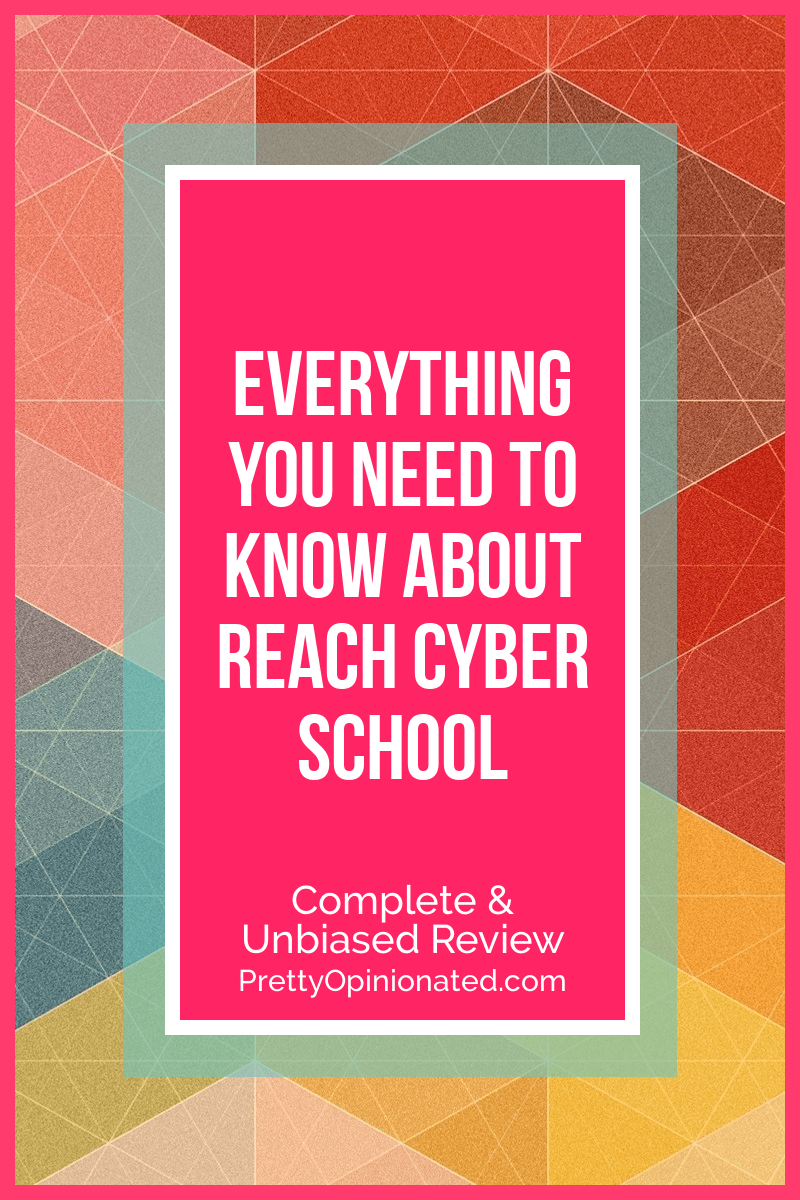
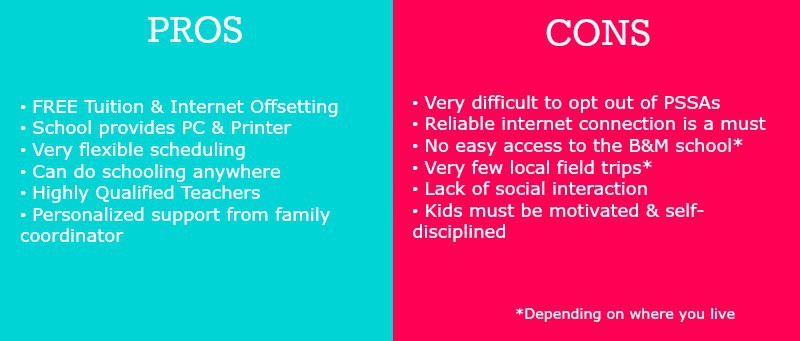
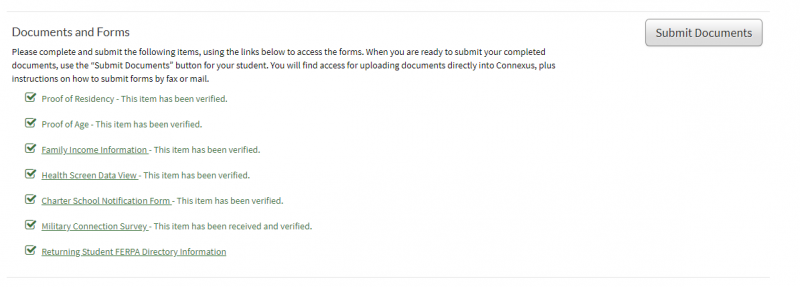
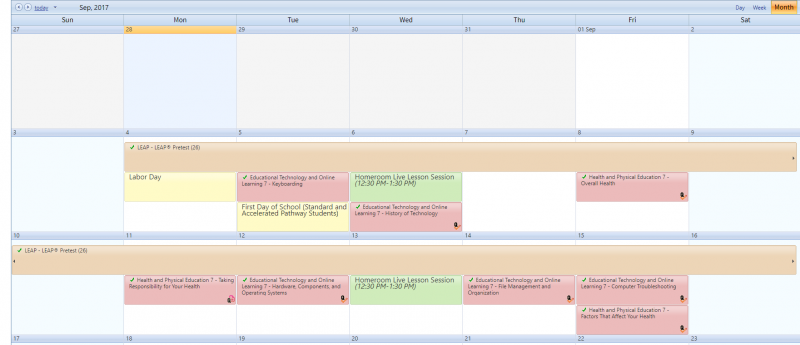

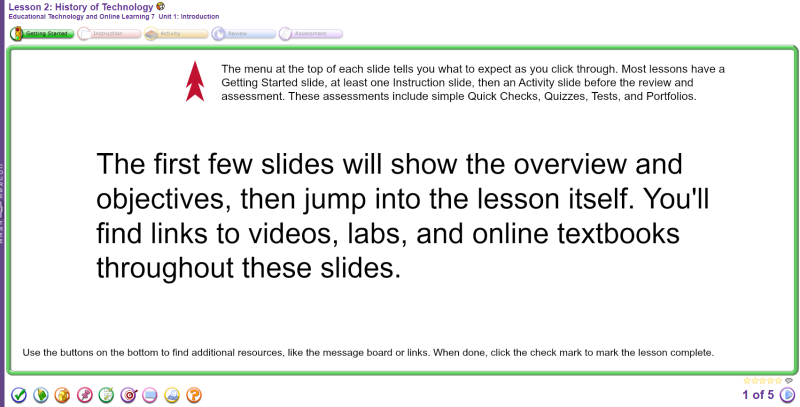


I know exactly what you mean with the pssa’s. My daughter has been in Reach, this is her 3rd year. They tried so hard and made me feel like I was breaking the law by opting her out. I’m on the other side of the state by Pittsburgh so I wasn’t driving to Harrisburg to view a test that I could view at my local school. I just politely refused and they really couldn’t do anything. They are supposed to provide a convenient time and place for the parent to view the test. It’s in the pssa handbook. I really like the school but don’t let them bully you. You should be able to view the test at the school your child would go to in your district. It’s an hour drive just to the test site for us. It’s my only gripe with the school.
Are the live lessons mandatory?
Hi there,
Thank you for this review. I was curious about what you didn’t like about Edgenuity. I noticed that one of the cyberschools utilized it quite a bit.
My biggest peeve about it is that every lesson is basically the same- watch a very long video with random questions thrown in to make sure you’re paying attention. When we did REACH, every lesson had different parts. Some videos, some text, some graphics, and so on. You could just do what you needed to learn the lesson and skip the rest. That way, if your child learned better by doing an activity than by watching a video, you could skip the video. Edgenuity videos are unskippable, so even if you know the material or prefer to learn it another way, you have to sit there and watch it (or let it run in the background). My son would read the transcripts, then just let the videos play in another tab. I feel like it caters to exactly one learning style. Does that make sense?
I am also unhappy with the curriculum this 2nd semester. Connexus was like college courses and I had had enough of my granddaughter sitting at a computer 7-8 hours a day and still behind, working week ends too! When they changed to Canvas, I couldn’t be happier. My child actually did not hate school anymore
This 2nd semester seems almost identical to Connexus and I don’t hear the “I don’t hate school” anymore. Back to square one. The teachers are great! But there are just too many quizzes, tests and assignments every day, after sitting through classes all day.
I totally agree with the PSSA testing. For me to VIEW the test in Harrisburg, to opt out is 215 miles from me . Even the test site is over an hour away at the Crack of dawn. The 1st year at Reach, we went to the test site. I’m estimating 100 children there. We contacted Covid19. I am older, so my daughter, not only sick, was scared to death. The next year, she said we weren’t going, period. She’s the mother which gives her the final say in our home. That, and we are against these tests. The state wants results? Go back to 4th grade Math and use the Mean, Median and Mode numbers of progress reports and you’ll get your averages.
Hello, I am a student going into 8th grade and I’m looking into Reach. For some context my family is trying to figure out online schools because we want to vacation in Barbados. I was wondering if you are able to do lessons in advance in case we do something the next day. You also mentioned scheduling classes around appointments and such could you please explain that further.
Sorry for taking so long to get back to you, I was on vacation. 🙂 Yes, you can absolutely do lessons in advance. My son did a lot of them ahead of time because he liked having easy days on Fridays.
Scheduling around appts- basically, you don’t have an actual schedule. They give you a guideline, but unless you want to attend live lessons (you can also watch them later), you don’t have to do English at 9, Math at 10, etc. So, if you have a appt or even just plain work better at a certain time, you’re free to do your classes whenever you want (or whenever your parents say you have to, of course).
It’s super flexible. Plus, if you get to a lesson that you already know, you can just skip through the slides to the end and take the quick check. All of them together only count for 5-10% of your grade, so if you discover that you really didn’t know the lesson and do awful on it, it’s not a huge deal. We used them to figure out what he needed to study more, for the most part. I hope that helps!
also forgot to add this but how long does it take for the pc & printer to arrive after enrolling
I enrolled my son in June when he went, and I had all the supplies by mid July. The second year, his supply box came maybe the end of July or beginning of August. If you’re closer to the start of the year, though, they send them out pretty fast.
I am curious how the schedule is for a Kindergarten student. Is it part time or full day until 2 or 3? How many hours are they expected to participate in each day and is it possible to vary time getting their work completed. I think it would be difficult for my 5 year old to put in a full day for the first year of school especially virtually; I also have a 3 year old to take care of simultaneously. Thank you in advance for your insight !
I’m so sorry, I have no idea what it’s like for elementary school. I have heard great things from other parents, but I don’t want to give you bad info. I know from reading the message boards when my son was enrolled, you do have to be a lot more “present” with younger kids, where with my son, I could just say, “go do your school work,” and then go back to my work, popping in only if he needed help with something.
As far as hours go, I do recall that elementary school kids have a slightly more “set” schedule. However, it’s not like a full school day, where they do English for 40 minutes, math for 40, etc. It’s still highly flexible. So, if your child learns better in the afternoon, you can do school work then. Some days, my son finished his lessons in ten minutes, then did other educational things to fill in the rest of the hours. You don’t have to tell them play-by-play what those other educational things are,just how many hours your kids spent learning each day. The thing I like about them, versus the platform his current school uses, is that you can skip ahead to the “quick checks” for lessons. So, if the lesson is about, say, the ABCs (random example) and your child already mastered them, you can skip the lesson and go right to end.
Like I said, my son did it for middle school and I know there are differences, but they have really great support there, so you can ask them to walk you through a typical day before you enroll. I hope that helped a little!
Hello! I’m considering enrolling my child into Reach. He will be going into 2nd grade. I understand that you don’t have any background with the elementary side of it but I was wondering about the special education portion of the school. Do you have any dealings with that? My child has an IEP for a learning disability and I want to make sure that his work is tailored toward him and his needs so he doesn’t fall behind by doing work that is tailored for a child that is more advanced then he is. We have currently opted for him to be 100% remote with his local school district due to COVID but I received an email today from his special education teacher that there are certain aspects of his IEP that cannot be implemented the same as if he was in person. I understand that it is a challenge but I want to make sure he is still given the best help he can get whether he is online or in person. Any advice you can give is greatly appreciated.
Hi Heather, first, since I have even less experience with that angle, let me give you this info quick- this is the direct link to their special education info (including the contact info of the department):https://www.connectionsacademy.com/reach-cyber-school/curriculum/special-education
I can answer some parts of your question, though. Reach is super flexible, in terms of how the lessons are set up, class placements, as well as overall structure. I can’t say with 100% certainty that all classes are this way, but they do really tailor your child’s course load to fit his proficiency levels. My son went into 7th grade there with less-than-stellar grades from his previous school (6th grade was a really bad year all around), and the material was just right for him.
Again, while I’m not sure exactly how elementary school goes, the vast majority of the lessons end with a quick check. Each lesson has so many different parts, but only the final slide is “mandatory” (be it a QC, quiz, test, or project to upload). So, say he’s taking science, and you find that he’s struggling to get through every single slide of a lesson. Maybe he gets bored watching videos, or just can’t focus on the little activities they throw in. You can just skip them and do the parts that really do help him learn the material. Again, don’t quote me on that, because I’m not sure how it goes with elementary school. Definitely give them a call, they are really good at answering questions. I’m sorry I’m not more help in this area!
Hi Nicole! Thank you for the information. My husband and I discussed this over the weekend and started the enrollment process with Reach yesterday. I hate to take him away from his local school district where he has been going since Kindergarten and because they are familiar with his IEP but the email that I received regarding this IEP was concerning. As they are not used to conducting classes online my husband and I feel that enrolling him in an established online school is the best choice at this time as they are familiar with online education and working with an IEP.
Again, thank you for the information! It was very helpful.
I’m so happy I could help!! I hope he enjoys REACH. I think it’s definitely good to go with a program that knows how to handle online learning. Good luck!!
I was just wondering if they require phys Ed classes like where you have to do stuff, my family has been looking at a lot of school and the main reason I do not attend public school is because I have a very bad knee and just want to know if it is a requirement that I do phys Ed.
Sort of. Basically, you take gym along with health class, and have an activity log that you fill out each week and submit with each test. Pretty much anything counts- walking, swimming, yoga, etc. We put things like “walked the dog” and “played in the back yard with cousins” and “played in the snow” down and it was accepted without question. However, if you have a bad knee, they may even waive it, so ask about that.
I enrolled my son who will be entering 2nd grade; I’m in NEPA and was not thrilled with any prospective plan the district would settle on (we also loathed edginuity….it was soooo bori g for him and he hated the recordings he had to do to prove he was reading–we opted out of that thankfully). Your review actually settled my nerves on flexibility–my fiance and I are both back to work full time on different schedules and it has eased my mind to see from your review how flexible REACH is and that it will actually work really well for us. Thank you!!
Hi Tara! I’m in NEPA, too (E. Burg), and I completely agree with you on Edgenuity. Honestly, my son read the transcripts, then let the videos run in the background while he did other things. I’m so glad my review helped you!
HI! I am having trouble getting my son motivated in two subjects, just seems a little complicated for him. ( he is in third grade). Can we change those to easier courses? I am having trouble getting him motivated to begin with, and now that the classes seem difficult, can we have them changed or is the same for all third graders?
signed, nervous mom.
Hello
I am looking to enroll my 10 th grader. Did he complete high s hool brick and mortar or re enroll in Reach. If I have done my calculations, your son should be entering his first year of college. Do you feel like he had difficulty getting accepted to any of the state schools.